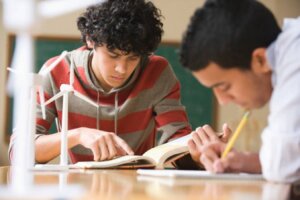
For the past century, educational communities have debated about how best to teach reading. Phonics was in…then it was out. Whole-word instruction replaced phonics and students continued to struggle. Today, reading instruction approaches still lack consistency across the nation and more startling, not all teachers are learning proper methods to teach students to read.
School districts are now taking a closer look at the science of reading. This approach combines phonemic awareness, phonics, fluency, vocabulary and comprehension. Many states, including Ohio, mandate the science of reading and Michigan lawmakers hope to pass similar legislation. In some parts of the country, like California, unions are opposing the concept.
“We are encouraged that states are seeing a need for change in how we teach reading,” said Summer Peterson, VP of educational services. “But it’s critical to address the fact that each student is as unique as a snowflake and they don’t all learn the same way. That’s especially true when you factor in English learners and those with learning differences.”
According to the National Assessment of Educational Progress, only 36 percent of fourth-grade students in the United States are proficient in reading, and only about 37 percent of high school seniors were proficient or advanced in reading. These dismal statistics have not changed since benchmark testing began in the 1990s, yet the nation seems to have accepted these results.
Students who struggle with reading typically struggle in all their subjects. They are more likely to drop out of high school, end up in the criminal justice system, and live in poverty. Yet many schools are passing these students to the next grade, knowing their reading skills are deficient.
Teachers are overwhelmed and struggling to provide additional resources needed for their students to catch up to appropriate grade reading levels. This often causes classroom disruption leaving the student feeling inadequate and isolated from their peers.
“We have entering freshmen who are reading at a 3rd or 4th grade level. It makes no sense to try to teach all struggling students the same way,” Peterson explained. “Our model is personalized instruction – meaning we assess each student, where they are in all subjects and how they learn. Then we develop a customized plan suited to their needs, supported with extra tutoring or academic labs and watch them flourish.”
Peterson points out that teachers should be empowered to deploy the method that is best suited to the individual student. “Let’s trust teachers to know which method works best for each students’ academic growth.”
